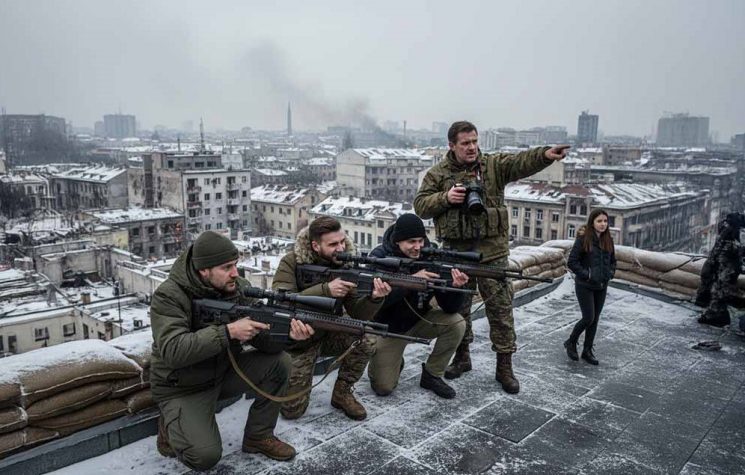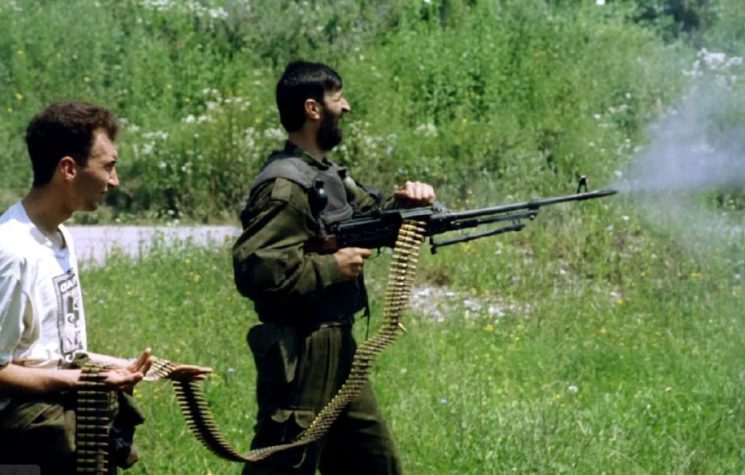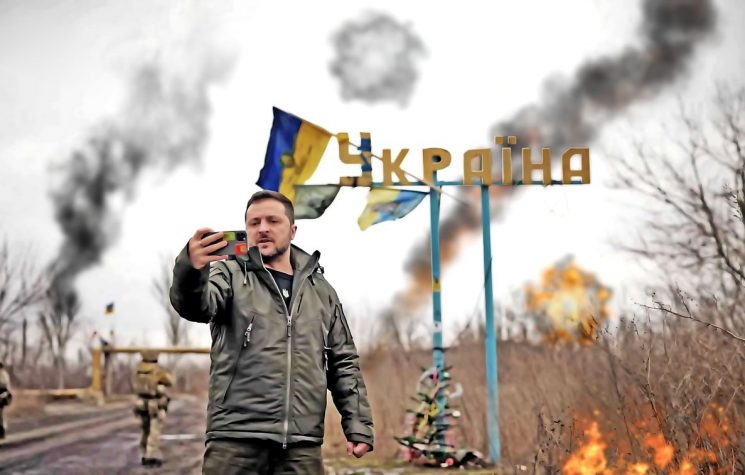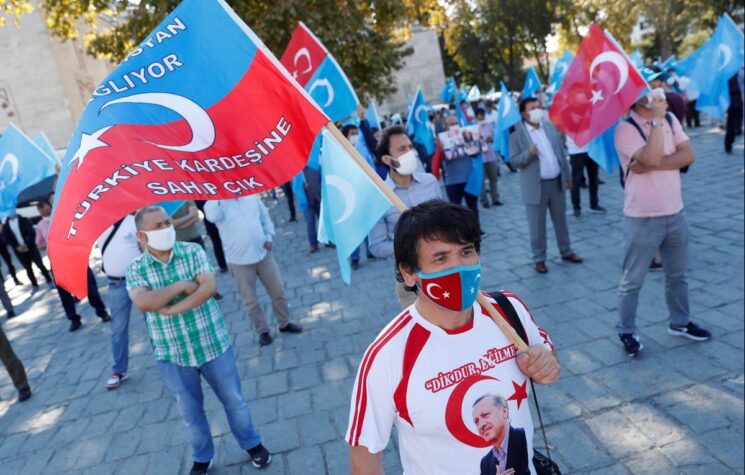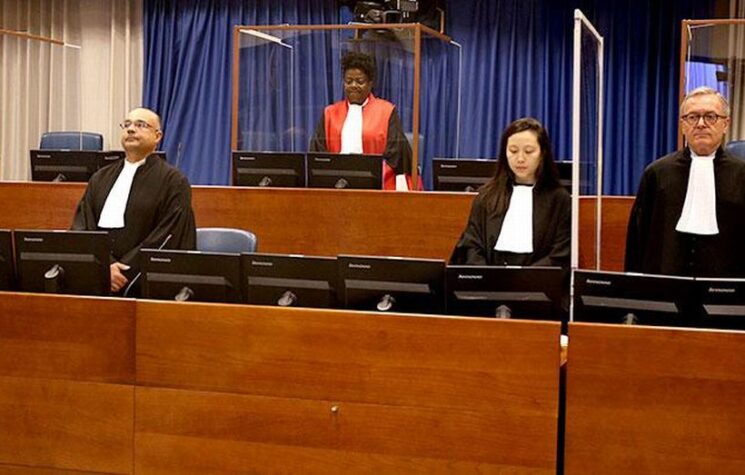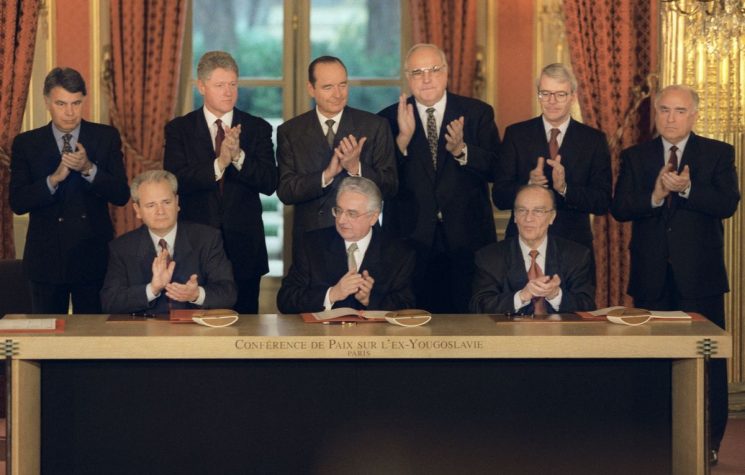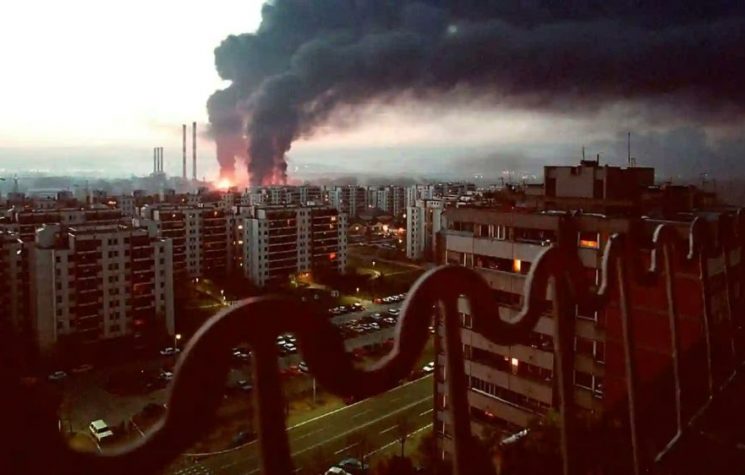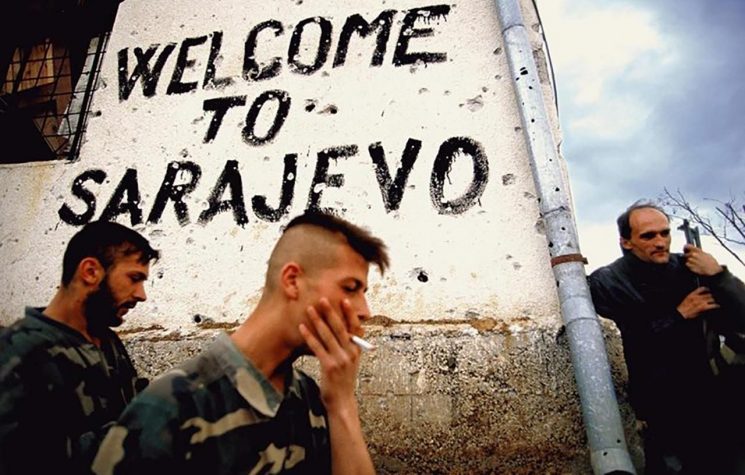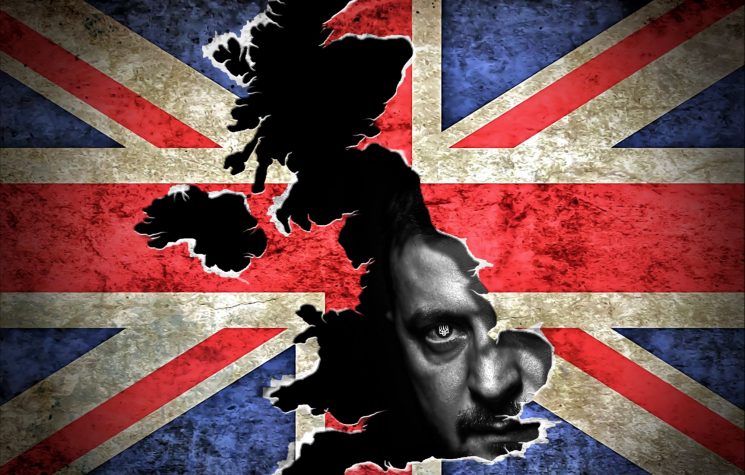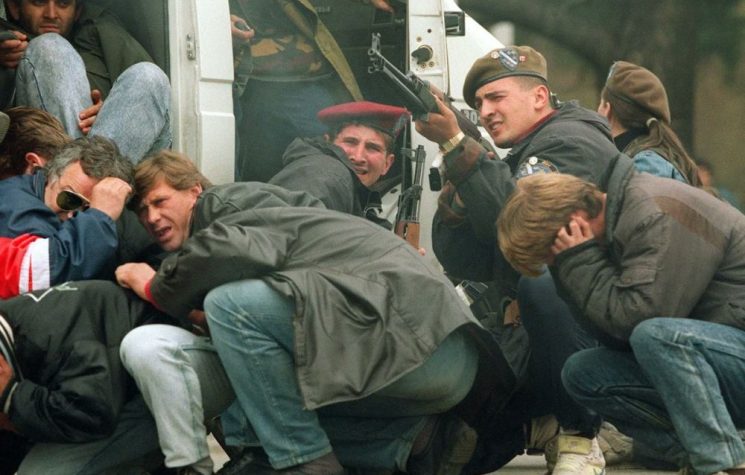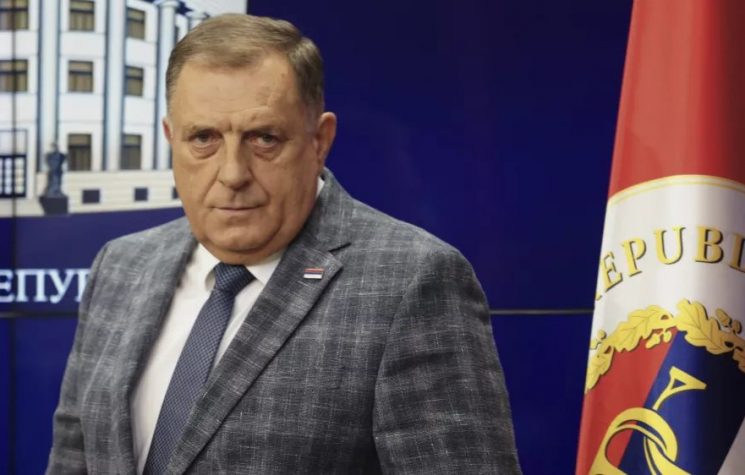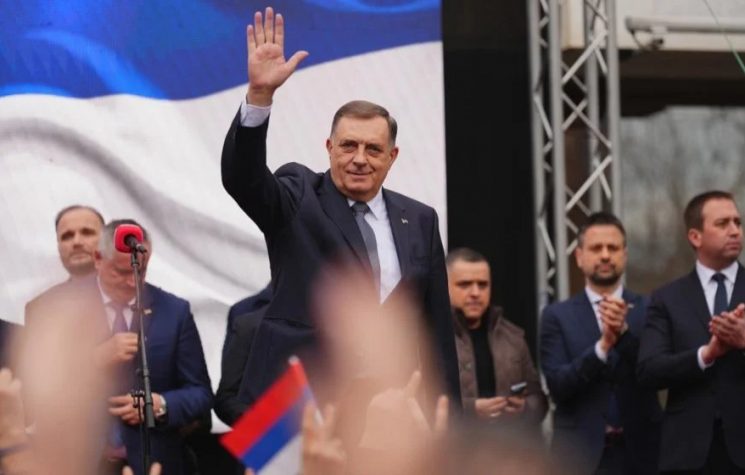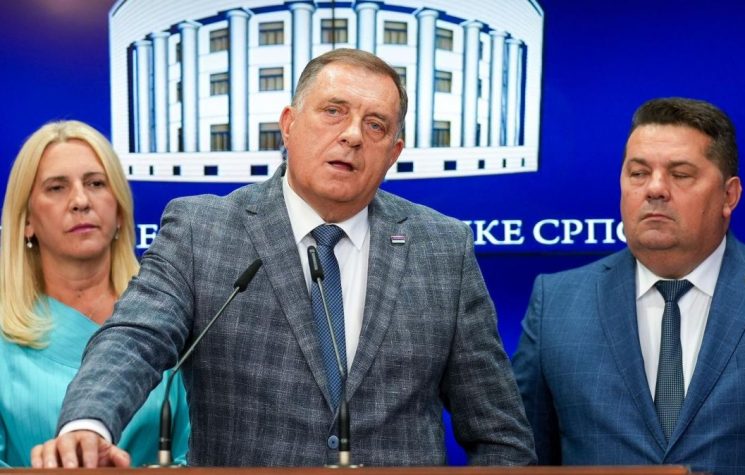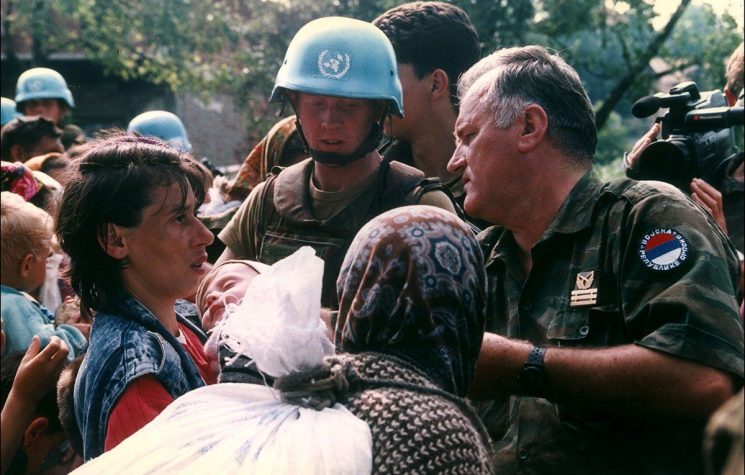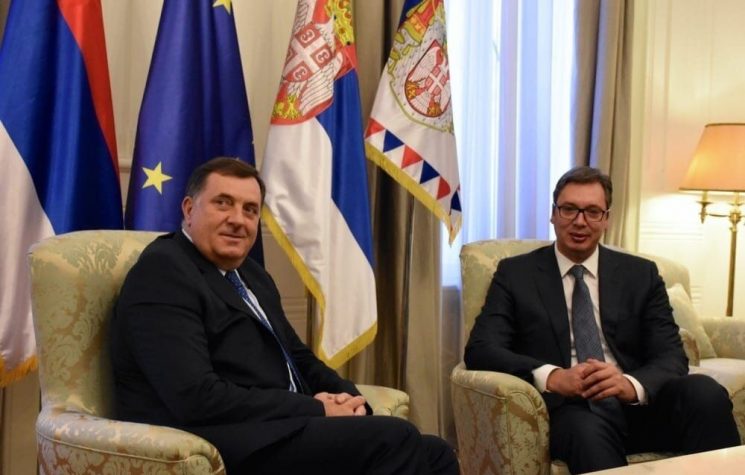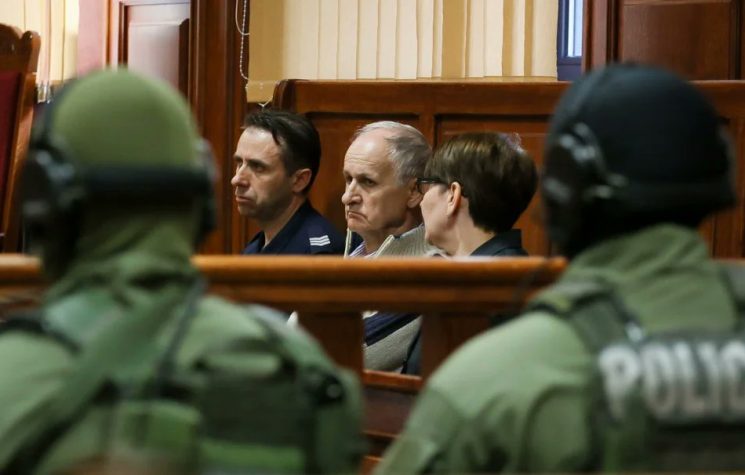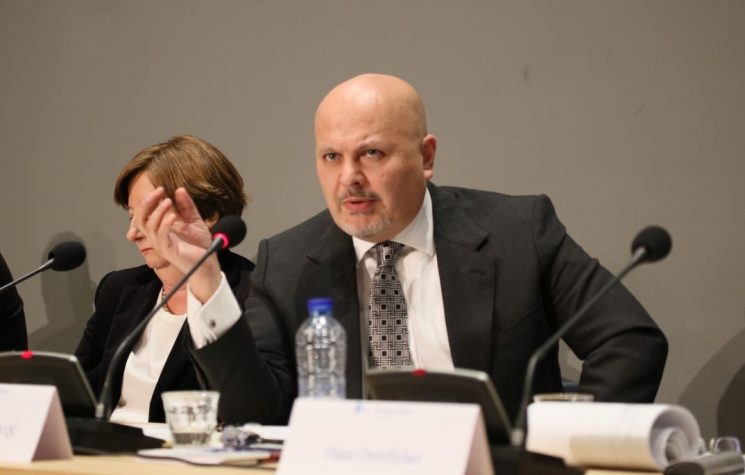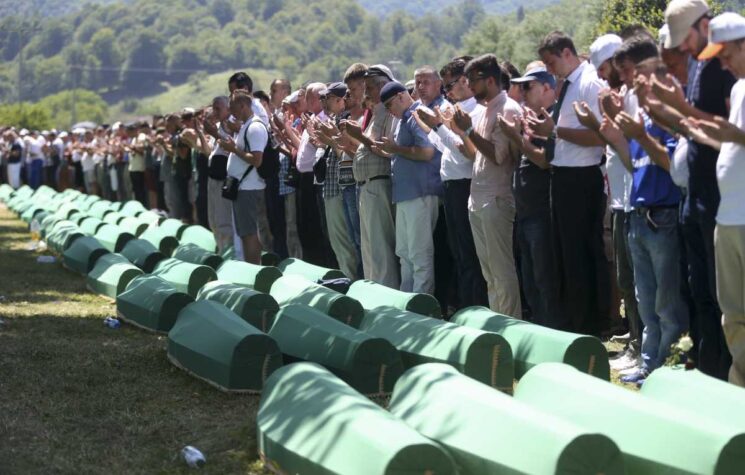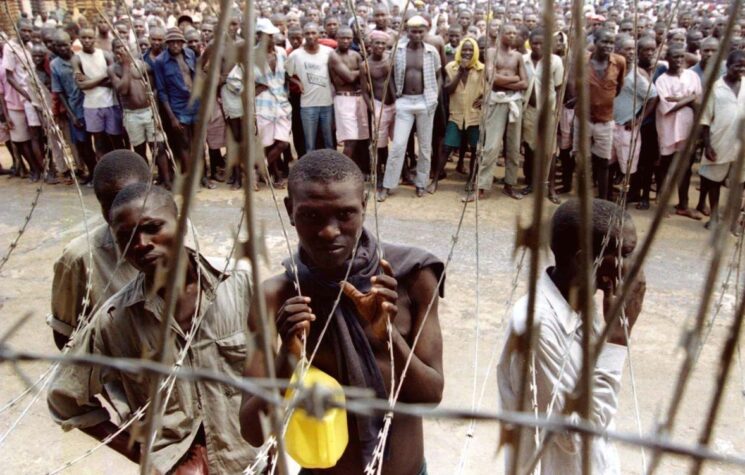In the course of his continually improving cross-examinations, Karadzic managed to deliver quite a few blows to the prosecution’s (or the Tribunal’s, since they are inseparably merged) case.
UK Foreign Secretary Dominic Raab sounded jubilant as he commented on the impending transfer of Radovan Karadzic, the former President of the Bosnian Republic of Srpska entity, from the Hague to Great Britain. But no, Great Britain is not preparing to host Dr Karadzic for a state visit, including an audience with the Queen. The plan is to transfer him to that country as a prisoner (or, as Karadzic pointedly put it in stating his vigorous objection to such a disposition, as a “prisoner of war”) to serve the rest of his life sentence in the United Kingdom.
Mr. Raab may have some personal as well as official reasons to gleefully anticipate the indicated decision about Karadzic’s final destination. As BBC Diplomatic correspondent James Landale observes, “One of the young lawyers who drafted the legal procedure to transfer Karadzic to the UK was a certain Dominic Raab, who is now the Foreign Secretary – and who ultimately agreed to the request from the UN that the former Bosnian Serb leader should serve out his term in a British jail.” But as Landale lets on, there may also be an official dimension to British glee at having bagged that particular guest: “British intelligence played a role in his capture in Belgrade in 2008 after 13 years on the run. British judges and lawyers were involved in the trial against him at a United Nations tribunal that the UK helped to set up.” So it would be a really nice way to wrap it all up by hauling the man to a British gaol to do his time, right? There is no discernible conflict of interest in all of this, of course.
But there are some very serious safety concerns at least in this otherwise impeccable plan. British prisons, with their diverse (to put it politically correctly) population are not the most suitable repositories for inmates accused of committing red flag crimes such as “genocide” against the Bosnian Muslim coreligionists of many of the prisoners who would be sharing common space with Dr Karadzic. Putting aside Landale’s pious explanations such as “Officials say the reason the UK agreed is because it is on the list of UN members willing to detain those found guilty of global crimes, and it wished to show its continued support for the international rules-based order” (for more on the particulars of that “order,” see here), the hard reality of the matter is that there already was a precedent for precisely the sort of potentially lethal incident that it is feared could involve Dr. Karadzic.
In 2010 another high profile Serb prisoner, General Radislav Krstic, was shipped from the gaol of the International Tribunal in the Haag over to the British gaol of Wakefield to do his sentence. Krstic was brutally assaulted by some British prisoners who wanted to express their religious solidarity with Krstic’s alleged victims in Bosnia, with intent to slash his throat and improve on the excessively mild 35-year sentence imposed on the general by ICTY. Fortunately for Krstic, his agonized cries for help attracted the attention of the guards, who arrived just in time to rescue him. But the incident prefigures a likely scenario that might at some point befall Dr. Karadzic as well, as he relaxes to spend the last days of his life in merry old England.
All of which is not to suggest that ICTY judges (or the Secretariat, or whoever makes these arrangements at the Hague), or their British counterparts, sought wilfully and deliberately to cause Dr Karadzic’s premature and violent death. But there are plenty of reasons to suspect that neither are they are overly concerned by such a possibility, and that such an outcome – should it occur – would not greatly perturb them.
Though not a lawyer (he is a psychiatrist), contrary to the Tribunal’s well-intentioned advice, Karadzic insisted on exercising the right to represent himself instead of entrusting his fate to one of the “approved” and accommodating attorneys from ICTY’s lawyers’ list. Dr. Karadzic, who is an intelligent guy and apparently a fast learner, then mounted a courtroom performance that should put many a weak-kneed and vacillating “approved” Hague defense counsel to shame. Fortunately, in its infinite arrogance, convinced that publicly proving prosecution cases would be a piece of cake, ICTY miscalculated and set up an imperfect but on the whole acceptable video and transcript system which now preserves its embarrassing legal perversities for posterity. It preserves also much of the defense evidence and arguments, regardless of how systematically ignored they may have been by the chambers in composing their politically mandated verdicts.
Even so, the Karadzic trial chamber could not entirely bypass, for example, pro se defendant Karadzic’s vigorous challenge to the prosecution’s use of the Joint Criminal Enterprise mechanism. JCE is a catchall device to magnify the defendant’s alleged guilt by arbitrarily adding supposed co-conspirators so as to – Vishinsky-style – vastly expand the circle of his alleged associated miscreants. In a discrete admission at paragraph 3460, page 1303 of the Karadzic Trial Judgement, the chamber felt compelled to grant that “there was no sufficient evidence presented in this case to find that Slobodan Milosevic agreed with the common plan” [to create territories ethnically cleansed of non-Serbs]. That was a painful admission in the Karadzic case because this statement explicitly undermines one of the Tribunal’s main doctrinal postulates, that the leaderships of the Republic of Srpska and Serbia were linked by a common conspiratorial design to establish a “Greater Serbia” by resorting to criminal methods such as ethnic cleansing and genocide.
In the course of his continually improving cross-examinations, Karadzic managed to deliver quite a few other blows to the prosecution’s (or the Tribunal’s, since they are inseparably merged) case. It is enough to cite just two.
In his cross-examination of Dr. Thomas Parsons, a forensic specialist for ICMP, the agency set up to collect and process Srebrenica mass grave exhumation data, on 22 March 2012 (p. 26633 in the trial transcript) Karadzic extracted from the prosecution witness the notorious truth that Srebrenica victim DNA profiles, helpfully assembled by ICMP and used by the prosecutor to allege thousands of “genocide” deaths, in fact, all featured a crucial deficiency which voided their probative value. The DNA profiles, Dr Parsons was compelled to admit, spoke nothing of the manner of death, at most being able just to corroborate that the individual in question was dead. Whether death occurred by execution, as it had to for the Srebrenica genocide case to stand up, or in combat, as at the same time and in close proximity an entire division of the Bosnian Muslim army was fighting its way out of Srebrenica in combat formation, Dr Parson granted that this important question his evidence could not properly answer.
Dr Karadzic scored more direct hits in his cross-examination of prosecution’s sole allegedly percipient witness-perpetrator in Srebrenica, Drazen Erdemovic, on 27 and 28 February 2012. Genocide, it should be recalled, is a specific intent crime. It can be found to have occurred only if there is proof that the killing was committed with intent to destroy a protected group, in whole or in part. Asked by Karadzic whether he took part in the execution of Muslim prisoners with the intent to destroy them in Bosnia as an ethnic group or to exterminate them as a nation, Erdemovic was firm in his reply: “No, Mr. Karadzic.” That does not leave much room for the specific intent necessary to prove genocide.
Under continued cross-examination, Erdemovic disclosed that his commander was corrupt and was paid several kilos of gold by unidentified sponsors for arranging the use of his men in the execution of prisoners.
The plain suggestion of that testimony is that someone had bribed Erdemovic’s corrupt commander to lend his unit for the criminal purpose of executing prisoners. Why would a bribe in gold be required if the order to commit the crime came down through the Serbian Army’s chain of command, where the defendant Karadzic himself was commander-in-chief? Wouldn’t a simple order and regular soldiers’ salary be enough?
The Tribunal and its enablers obviously have plenty of reasons to bear a heavy grudge against the Bosnian Serb psychiatrist who outmanoeuvred and often humiliated their best legal minds in the courtroom. Whether their justifiable resentment rises to the level of deliberately setting the stage for his violent death in a British prison may be disputable. But that they will not shed any bitter tears if it occurs there, that much is certain.








